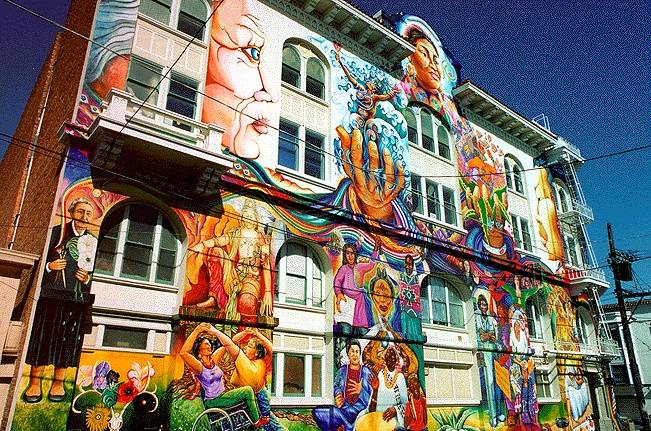Community Murals: Difference between revisions
m (1 revision(s)) |
(categories and links) |
||
| Line 1: | Line 1: | ||
[[Image:art1$women_s-building-art.jpg]] | [[Image:art1$women_s-building-art.jpg]] | ||
'''The [[Maestrapeace on the Women's Building Women's Building]] on 18th Street in the Mission''' | '''The [[Maestrapeace on the Women's Building| Women's Building]] on 18th Street in the Mission''' | ||
''Photo: Chris Carlsson'' | |||
"Consistently what was most subversive in community murals was their process. The actual, physical reality of people assembling to make decisions about their neighborhood was a galvanizing democratic experience." | "Consistently what was most subversive in community murals was their process. The actual, physical reality of people assembling to make decisions about their neighborhood was a galvanizing democratic experience." | ||
''-- Timothy W. Drescher, from his essay in ''Reclaiming San Francisco: History, Politics, Culture, a City Lights Anthology | ''-- Timothy W. Drescher, from his essay in ''Reclaiming San Francisco: History, Politics, Culture,'' a City Lights Anthology | ||
[[Murals: WPA to 1960s | Prev. Document]] [[The Duboce Bikeway Mural: Gateway to the Wiggle | Next Document]] | |||
[[ | [[category:Public Art]] [[category:buildings]] [[category:Mission]] [[category:1980s]] | ||
Revision as of 15:07, 7 August 2008
The Women's Building on 18th Street in the Mission
Photo: Chris Carlsson
"Consistently what was most subversive in community murals was their process. The actual, physical reality of people assembling to make decisions about their neighborhood was a galvanizing democratic experience."
-- Timothy W. Drescher, from his essay in Reclaiming San Francisco: History, Politics, Culture, a City Lights Anthology

